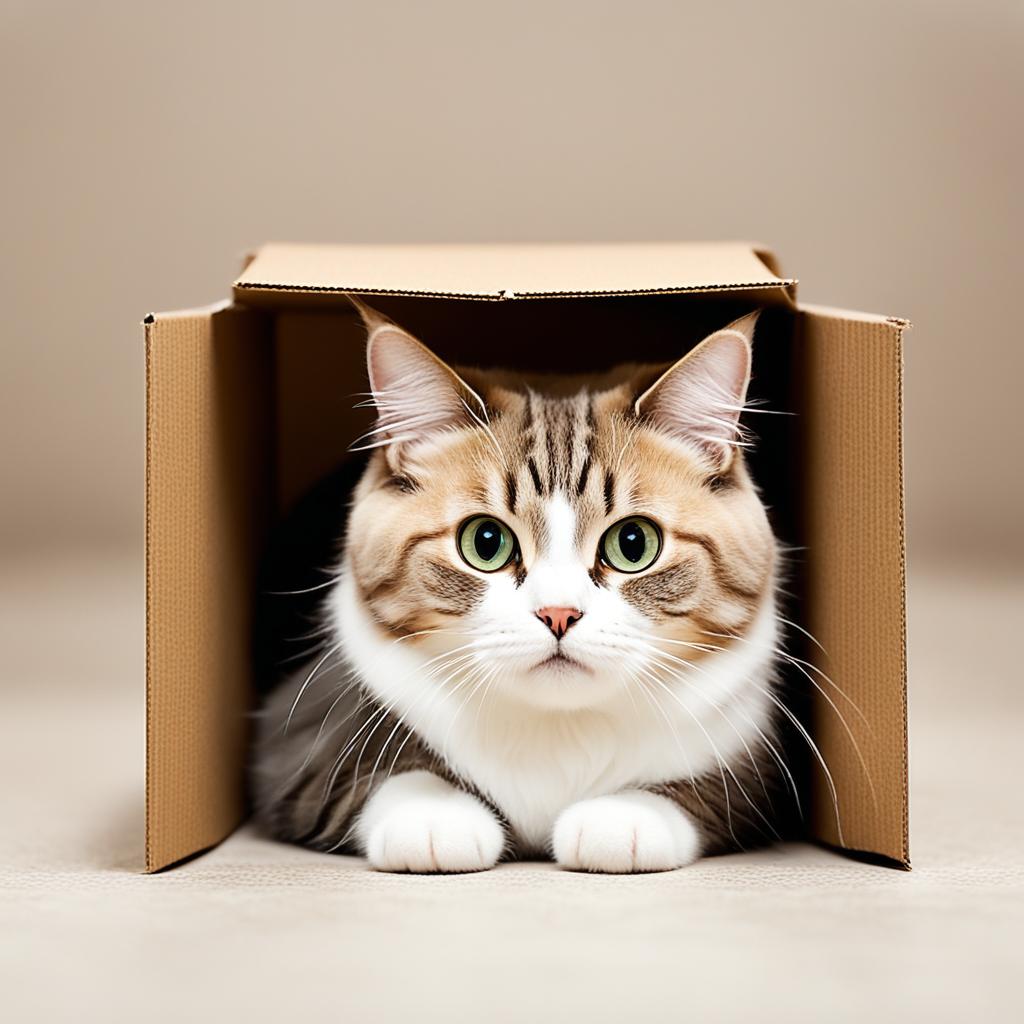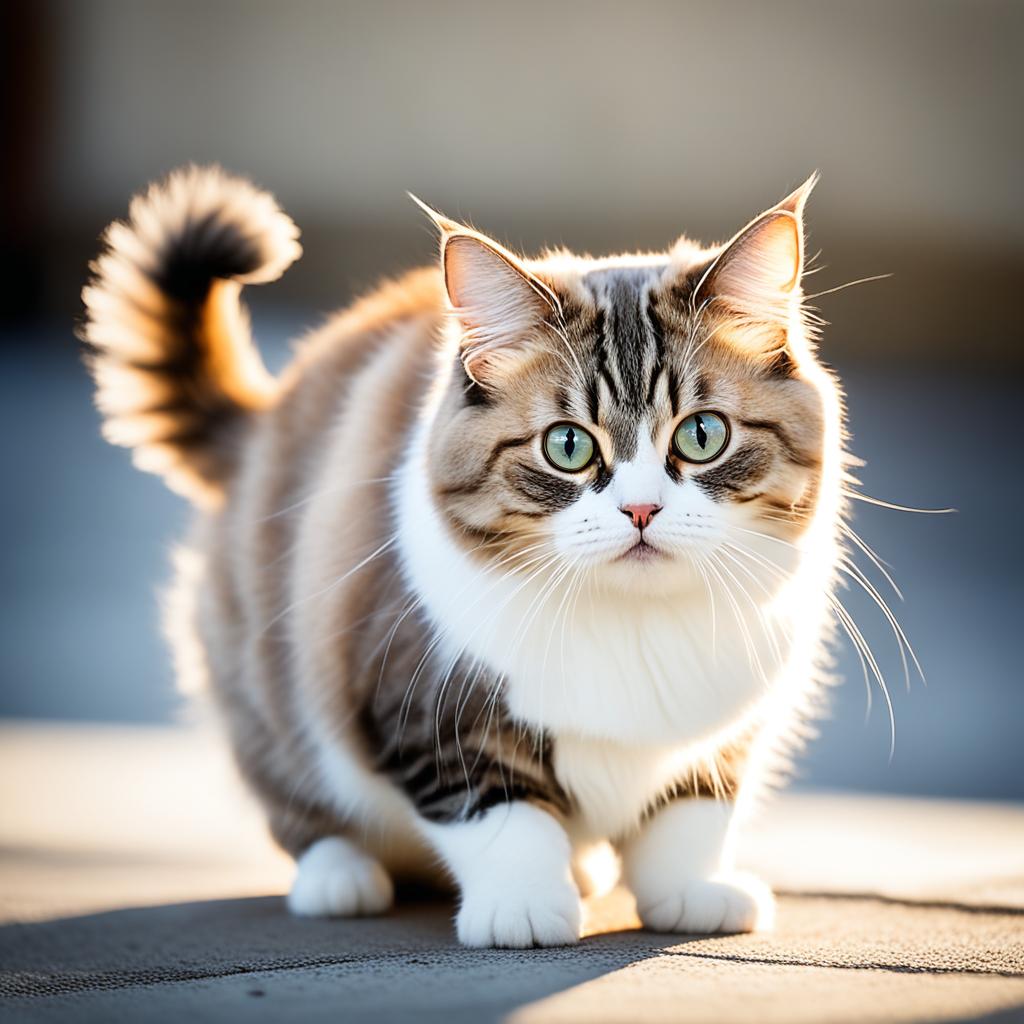Do you ever notice your Munchkin Cat suddenly gone, then find them in odd spots? These cats with short legs love to play hide-and-seek. They wiggle into small spaces or under furniture, turning their hiding time into a fun game.
Your Munchkin Cat’s vanishing act might leave you both puzzled and amused. Their unique behavior adds to their charm as pets. But, why do they choose to hide in such cozy nooks and crannies?
Key Takeaways
- Munchkin Cats often engage in playful hiding antics.
- Their distinctive short stature contributes to their amusing behaviors.
- Hiding is a way for Munchkin Cats to connect with owners through a game of hide-and-seek.
- Understanding these behaviors can deepen your bond with your feline friend.
- Various factors drive Munchkin Cats to seek out cozy hiding spots.
Introduction to Munchkin Cat Behavior

Munchkin Cats are known for their fun and curious ways. Even though they are small, they have a lot of energy. They love to explore, climb, and look for attention.
Seeing Munchkin Cats in action is both fun and cute. They move around with elegance, enjoying games and chasing toys. Their need to explore keeps life exciting.
These cats make even simple activities like looking into boxes seem fun. They are friendly and love spending time with their owners. They always keep a home lively with their antics.
Munchkin Cats bring joy with their unpredictable actions. They love to play and explore, making them great pets. With their loving behavior, they quickly become part of the family.
Common Munchkin Cat Hiding Spots

Munchkin Cats love to find hidden spots in your house. You’ll often find yourself wondering where they are. Their love for these places makes them funny and intriguing pets.
Why They’re Attracted to These Spots
Munchkin Cats are drawn to quiet, warm locations. Places like under the bed, in drawers, and behind the couch feel safe to them. These spots remind them of safe places in the wild.
Boxes are another top pick. They are snug and cozy, like a secure fort. It’s common to see a Munchkin Cat hiding among stuffed animals. This gives them comfort and helps them feel hidden.
Identifying and Securing Hiding Spots
Finding your Munchkin Cat’s hiding spot is key. Check under furniture, in cabinets, and in laundry piles. Making sure these places are safe will protect your cat.
- Under beds: Check for small things that could hurt them.
- Inside boxes: Look for sharp edges or objects inside.
- Amongst stuffed animals: Take out any small pieces.
Create safe hiding spots for your cat. It’s a good way to avoid accidents. Balancing safety and their need to hide will make your home better for everyone.
Why Is My Munchkin Cat Hiding?

Finding out why Munchkin Cats hide is like solving a puzzle. These cute, short-legged cats hide because it’s instinctive. They naturally look for safe, tight spots to feel secure.
Cats’ actions are heavily tied to their surroundings. Any sudden change, like new furniture or a move, might make them seek out a hiding place. This is their way of dealing with stress.
Cats, like us, need their alone time. Munchkin Cats sometimes just want to get away from it all. For them, it’s a way to relax and recharge.
Also, a cat hiding could signal they are not feeling well. If your pet acts differently, it could be a sign something is wrong. Paying attention to these signs is very important.
Let’s face it, sometimes your Munchkin Cat just wants to indulge in their own private hideaway, making it their little fortress of solitude.
Here are some common reasons your Munchkin Cat might hide:
- Natural feline instincts
- Response to changes in their surroundings
- Just needing some alone time
- Possible health issues
Understanding these reasons can help you bond with your pet. It also ensures they feel safe and loved.
| Motivation | Description |
|---|---|
| Feline Instincts | Natural desire for safe, enclosed spaces |
| Environmental Stressors | Response to changes in the environment |
| Solitude | Need for a personal, peaceful retreat |
| Health Issues | Possible response to discomfort or pain |
To understand your unique Munchkin Cat, keep these ideas in mind. It will help ensure they are happy and healthy.
Reasons Behind Munchkin Cat Hiding

Figuring out why your Munchkin Cat hides can be tricky. These cats are loved for their unique looks and interesting habits. So, it’s worth looking into what might be causing them to hide.
Munchkin Cat Anxiety and Stress
Munchkin Cats can get anxious in many situations, often choosing to hide. They might feel scared of strangers, loud noises, or small changes at home. When they get stressed, they look for a quiet spot to feel safe and calm. This hiding behavior is natural for them, helping deal with what they see as dangers.
Environmental Changes
Cats, like Munchkins, can react by hiding when their environment changes. They could hide if you move the furniture, get a new pet, or shift your daily schedule. It’s important to recognize this to keep your Munchkin Cat happy. Creating a stable, familiar space is key to their wellbeing.
| Trigger | Response | Advice |
|---|---|---|
| Noise | Hides under bed | Provide a quiet space |
| New pet | Seeks secluded area | Introduce new pets gradually |
| Routine change | Withdraws from social interaction | Maintain a consistent routine |
Is Your Munchkin Cat Scared?

Your Munchkin Cat may often look fearless but can show fear. Have you seen the signs of a scared Munchkin Cat? Let’s explore how cats show fear.
Munchkin cats have special ways of showing fear. Watch for these signs:
- Hiding: Cats might hide when scared. They feel safe in dark, small places.
- Crouching: A cat may crouch with its tail tucked when afraid. This makes them look less threatening to possible dangers.
- Flattened Ears: Flattened ears show your cat is scared. They may feel anxious or nervous.
- Wide Eyes: Wide eyes and dilated pupils show fear. Your cat is watching for any signs of danger.
Knowing what these signs of a scared Munchkin Cat mean is the first step. When you see your pet showing fear, you can help calm them down.
Understanding Munchkin Cat Behavior Patterns

Figuring out what’s behind your Munchkin Cat’s funny behavior is key. It’s crucial to tell the difference between normal hiding and behavior that might signal a problem. This way, you can make sure your pet stays healthy.
Normal vs. Abnormal Hiding
Munchkin Cats love to play and sometimes hide under things. They might hide briefly for a nap or a game. But, if they start hiding a lot or for a long time, it could mean they’re stressed or not feeling well.
Using Behavior to Decode Emotions
Watching your cat’s actions can tell you a lot about how they feel. Be on the lookout for any changes. If they’re hiding more than usual, it could be a sign of stress, fear, or a health issue. Tackling these behaviors can help your cat feel happier and safer.
Solutions to Encourage a Hiding Munchkin Cat to Emerge

Bringing a Munchkin Cat out of hiding needs a soft approach. Begin with gentle encouragement and patience. Use treats or toys they love to draw them out. Making your cat feel safe and loved is the main goal. Here are some tips to help:
- Use Treats and Toys: Leave their favorite treats or toys close to their hiding place. This can make them curious.
- Create a Safe Environment: Ensure the area is quiet and free of things that might scare them.
- Utilize Calming Remedies: Feliway diffusers and similar products can create a soothing atmosphere.
- Maintain a Routine: Routines help cats feel secure. Keeping to a schedule offers comfort and safety.
To get a hiding Munchkin Cat to come out, know what they like. Some like soft voices, but others prefer quiet. Don’t push them too hard; it can make them more anxious.
Help your cat by giving lots of places to climb and hide. This includes cat trees or shelves and cozy hiding spots. Also, be sure to give them love and treats when they come out. It shows them it’s good to be brave.
Use these ideas to help your Munchkin Cat feel more at ease. Watch how they react and change what you do as needed. This approach helps build trust and a strong bond with your pet.
Munchkin Cat Hiding and Health Issues
Munchkin Cats sometimes hide, and this can tell us a lot about their health. They might just be in a cozy spot. But, if they hide a lot or all of a sudden, there could be health problems. It’s important to pay attention to your Munchkin Cat’s hiding habits. This helps make sure they’re healthy and happy.
Pain and Discomfort
If a Munchkin Cat is in pain, they might hide. This is their way of staying safe. Despite being playful normally, they can pull back if something’s wrong. So, if your cat is less interactive, they might be hurting. It’s crucial to notice these changes. Caring for a Munchkin Cat means recognizing when they’re not themselves.
Signs to Look Out For
It’s key to spot discomfort signs early in your Munchkin Cat. Look out for things like not eating as much, being extra tired, or acting out. These are early signs of trouble. Regular vet visits are important. They help catch and treat any health problems fast. This keeps your cat well and happy.




